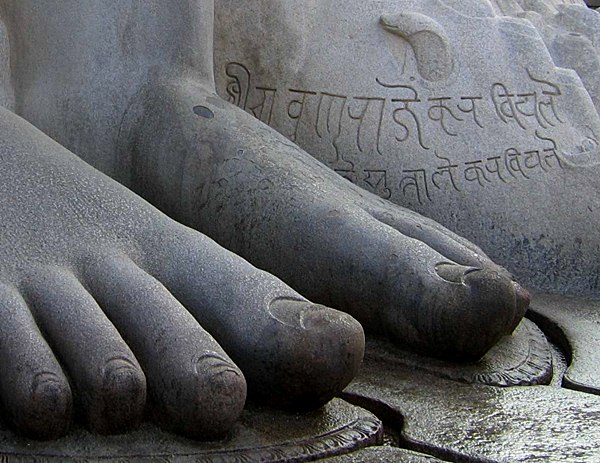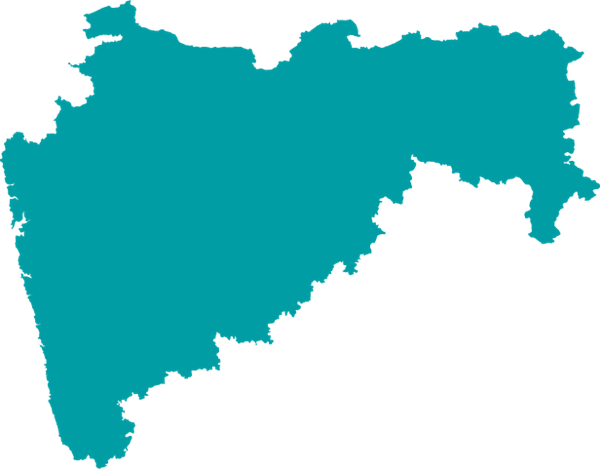Mahaveer Sanglikar
+++++
History of Jainism in Maharashtra: Jainism has a long and significant history in Maharashtra, which is evident from ancient times. Numerous Jain caves, rock inscriptions, and copper plates throughout the region highlight the prominence of Jainism in Maharashtra. Moreover, the literature of Jains and others shows the historical presence of Jainism in Maharashtra.
Maharashtra, located in the western part of India, forms a part of the Deccan Plateau. Historically, its boundaries extended into what are now Karnataka and Andhra Pradesh.
Although the name “Maharashtra” does not appear in Vedic literature, the Ramayana, or the Mahabharata, it is referenced in various Jain and Buddhist texts, as well as some Hindu Puranas.
As a bridge between northern and southern India, Maharashtra has played a crucial role in the spread of Jainism from the north to the south. Jain missionaries from the north traveled through Maharashtra to reach the southern regions. The earliest known migration occurred in the 3rd century BCE, when Acharya Bhadrabahu and thousands of Jain monks journeyed from North India to Karnataka, passing through Maharashtra.
Archaeological Evidence of Jainism in Maharashtra
The migration of Jain monks into South India via Maharashtra dates back to the 3rd century BCE. The earliest inscriptional evidence of Jain presence in Maharashtra is found in the Jain cave at Pale (Paaley) in Pune district. This cave, located along the ancient route through Naane Ghaat, features a rock inscription in the Prakrit language and Brahmi script. The inscription reads ‘Namo Arhanta Nam,’ but does not include the full Namokar Mantra. Scholars such as Sankliya date this inscription to the 2nd century BCE, marking it as the oldest known Jain inscription in Maharashtra.
Other significant Jain caves and rock inscriptions, carved in later periods, are found throughout Maharashtra. Key Jain cave sites include Dharashiv and Ter in Osmanbad district and Ellora in Aurangabad district. Other Jain cave sites in Maharashtra are Mangi-Tungi, Gajpanth, Ankai-Tankai, Patan, Paaley, and Kundal in various parts of the state.
Many of Maharashtra’s Jain pilgrimage centers have roots in either the ancient or medieval periods.
The First Marathi Inscription is a Jain Inscription
In 981 CE, the first Marathi inscription was carved at the left foot of the giant Bahubali statue in Shravanabelagola, southern Karnataka. The inscription states, “Chavundaraye karaviyale,” which means “Chavundaraya created this.”
Chavundaraya served as the general for Ganga dynasty king Marsinha.

T
hey inscribed the same text in Kannada and Tamil beside the statue’s right foot.
Shravanabelagola is located far from Maharashtra’s present-day southern border. This place is in a region where Kannada is the dominant language, with Tamil-speaking areas nearby. Despite this, they carved a Marathi inscription here because Marathi-speaking Jain pilgrims from Maharashtra frequently visited (and still visit) this site.
This Marathi inscription is another evidence of the presence of Jains in Maharashtra in the 9th-10th century.
Literary References of Jains and Jainism in Maharashtra
Literary sources also confirm Jainism’s presence in ancient and medieval Maharashtra. Early Jain texts were written in Ardhmagadhi, the language of ancient Magadh (Bihar). However, Jain scholars later composed a substantial amount of literature in the Marhatti language. This language was later known as the Maharashtri language), a Prakrit spoken in Maharashtra. The prominence of this language led people to refer to it as Jain Maharashtri. In the following centuries, Jain scholars in Maharashtra wrote literature in Maharashtri Apbhransh, a precursor to modern Marathi.
Notably, the Jain Emperor Samprati, grandson of Emperor Ashoka and disciple of Jain Acharya Suhasti, sent envoys to various regions, including Maharashtra, to facilitate the travel of Jain monks.
Pratishthan (now Paithan) in Aurangabad district was a major Jain center. According to tradition, it was the birthplace of Jain Acharya Bhadrabahu. In the 2nd century BCE, Pratishthan became the capital of the Satvahan kings, originally from Andhra Pradesh. Legend has it that Acharya Bhadrabahu, at the request of the Satvahan king, adjusted the date of Paryushan, leading to the celebration of Samanpuja in Maharashtra. The king was noted as a devoted follower of Jainism.
The Jnaneshwari, a revered text by Saint Jnaneshwar written in the 13th century, mentions Jain monks, indicating their influence during that period.
During the 14th to 18th centuries, various Jain scholars wrote extensively on Jainism in Marathi, following an earlier tradition of writing in Maharashtri Apbhransh. Notable scholars include Mahakavi Pushpadant, Chimna Pundit, Meghraj, Kamraj, and Mahichandra.
Jain influence on the Marathi language is evident through the inclusion of many words, phrases, and idioms associated with Jainism.
The Bhattarak Tradition in Maharashtra
The Bhattarak tradition of Jain ascetics, which flourished primarily in Karnataka, also took root in Maharashtra. Four major Bhattarak seats were established in Maharashtra: Jinsen Jain Math in Nandani (Kolhapur district), Laxmisen Jain Math (Kolhapur), Vishalkeerti Jain Math (Latur), and Karanja Jain Math. These seats played a significant role during the decline of Jainism and are historical landmarks. While the first two seats are still active, the latter two have ceased operations.
Jainism and Royal Dynasties in Maharashtra
Jainism was a significant religion among the Kshatriya (warrior) class in India, and many royal families in Maharashtra were adherents of Jainism.
Several dynasties ruled in parts of Maharashtra, including the Kadambs, Rashtrakuts, Chalukyas, Ratts, Kalchuris, Shilahars, and Yadavs, all of which had ties to Jainism. Various Kings from these dynasties supported Jainism and made grants to Jain temples, and some of the Kings were followers of Jainism and Jain Acharyas. In many cases, the queens were staunch followers of Jainism.
Kadamb Dynasty (CE 345 to 540)
Kadambs ruled in North Karnataka, Southern Maharashtra, and Konkan. They were patrons of the Yapaniya sect of Jainism. This sect became very popular, and it was a blend of Digambar and Shetambar sects.
Kadambas constructed numerous Jain temples.
Rashtrakut Dynasty (CE 753-982)
Renowned historian A.S. Altekar notes that Jainism was widely followed during the Rashtrakut era.
Rashtrakut King Indra II, who built the famous Ellora Caves in Aurangabad, was a notable supporter of Jainism. His successor, Krishna II, was a disciple of Jain Acharya Gunbhadra. King Amoghvarsh (I) was a disciple of Acharya Jinsena. Later Amoghvarsh himself became a Jain monk.
The Rashtrakuts ruled from Malkhed (now Gulbarga district in North Karnataka) in Karnataka, Maharashtra, Gujarat and Tamilnadu.
Chalukyas (CE 636 to 740)
The Chalukyas were known for their support of Jainism. They maintained a family tradition of Jainism. Their first capital was in Kundal (present-day Sangli district), a notable Jain pilgrimage site. Chalukyas ruled in Karnataka and Maharashtra.
Ratts (CE 875 to 1250)
Ratt was a small dynasty, which ruled in the Belgavi region of adjoining Maharashtra. Ratts were patrons of Jainism. They constructed significant Jain temples, such as Kamalbasti in the Belgavi fort.
Shilahars
The main branch of the Shilahara dynasty ruled in the Kolhapur region. During their rule, Kolhapur became a major Jain center of Jainism. Many of the Shilahar kings, Queens, Generals, and princesses were dedicated supporters of Jainism.
Shilahar King Gandraditya and Bhoja II were disciples of Jain Acharya Siddhanta Chakravarti Maghnandi.
The Yadavas of Devagiri (CE 860 to 1317)
The Yadavas of Devagiri (Maharashtra) ruled a large region of Maharashtra and Karnataka. Their kingdom extended from the banks of the Narmada River in the north to the banks of the Tungabhadra River in the south. Marathi and Kannada languages developed within their domain, along with the growth of Jainism.
King Dridhaprahar
The first king of this dynasty was Dridhaprahar. The story of Dridhaprahara’s birth is found in a Jain inscription located at Anjaneri in the Nashik district. Additionally, information about Dridhaprahara is found in the 11th-century Jain Acharya Jinaprabha Suri’s text ‘Nasikya Kalpa.’ According to these sources, Dridhaprahara was a Jain king who constructed a temple dedicated to Lord Chandraprabha.
Several other Jain kings of this dynasty, including Seunachandra, Seunachandra II, Bhillama (I), Bhillama (V), Jaitrapala, Krishna, Ramachandra, and Mahadeva were followers of Jainism.
Devagiri
The Yadavas’ capital was Devagiri. A medieval Jain temple existed on the fort of Devagiri, now known as Bharatmata Temple. Excavations conducted by Pune University, Marathwada University, and Deccan College Pune at the Devagiri fort unearthed many Jain idols and other relics.
The conclusion drawn from these findings was that there was also a large Jain temple here. These Jain relics and idols are preserved in the museum of Devagiri.
There are many inscriptions related to the Yadavas in Maharashtra and Karnataka, with numerous references to Jainism. These include mentions of Yadava queens or kings donating land for Jain temples or constructing Jain temples.
An interesting fact is that most of the Yadava queens were followers of Jainism and were predominantly from Karnataka. Many of the Yadavas’ military and administrative officers were also adherents of Jainism.
The Decline of Jainism
Jainism was a dominant religion in the Deccan during the medieval period. But it began to wane after the 13th century due to political and social changes. The rise of Warkari, Mahanubhav, and Veershaivite sects, which shared similarities with Jainism but were perceived as more practical, attracted many followers.
Moreover, the Islamic invasion was a big reason behind the decline of Jainism.
Today, the remnants of medieval Jain communities can be seen in the Saitwals, Jain Kasars, and Somvashi Kshatriya Kasars, as their surnames are similar to other local communities. Most other present-day Jain communities in Maharashtra are migrants from South or North India.
You May Like to Read …
King Vanraj Chavda: The Patron of Jainism
Rajabai Clock Tower at Mumbai University
V. Shantaram: His Legend and Achievements
Jain Mission
Online Hindi Magazine
TheyWon
English Short Stories & Articles

gangerawal jain gang vansh sai they kiya gangerawal jain kis khastriyes clan sai nikle hai